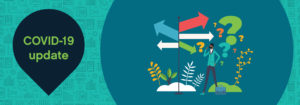In March, MedeAnalytics announced that the Mississippi Division of Medicaid (DOM) had become the nation’s first Medicaid agency to send and receive clinical data in real-time. The agency worked with MedeAnalytics and Epic to share Medicaid data with the state’s largest provider of care to Medicaid patients, the University of Mississippi Medical Center (UMMC).
Following the announcement, Rita Rutland, deputy administrator for the division’s Office of Information Technology Management, and several others associated with the project spoke to HealthLeaders and StateScoop on the topic. If you missed it, here is a glimpse of what they said:
“After years of working with our technology partners to build a foundation consisting of an EMPI and clinical data repository, we can now instantly share patient summaries with external stakeholders, such as UMMC. This real-time access to beneficiary data will improve insight into beneficiary health trends, empower better care decisions and much more,” said Rita Rutland in a conversation with HealthLeaders.
In an interview with StateScoop, Dr. John Showalter, chief health information officer for UMMC, said, “Now we’re able to reach into the Medicaid clinical data repository when we schedule a patient or they show up at the ER, so it’s pre-cued for our physicians and already brought into their workflows. In a single click, our physicians can see all the medications they’re on that they’re filling prescriptions for, all the visits they’ve had, what kind of doctors they’ve seen, what tests they’ve had.”
David Dzielak, the Medicaid division’s executive director, also spoke with StateScoop, “We’re not content anymore with just having the providers see our beneficiaries and treating them for the conditions that they have. We really want providers to adopt the idea that they have the condition, but how do we prevent them from progressing and how do we move them back to a more healthy condition or health status?”
For additional insights from Mississippi DOM and UMMC, visit our “In the News” page.
Get our take on industry trends
Data visualization: A picture is worth a thousand…healthcare data points?
The amount of data produced daily has grown exponentially with nearly 90% of the world’s data generated in the last two years alone. To ensure we can make sense of this data, analysts must find meaningful ways to present the information to their audiences.
Read on...Crystal ball not necessary: predictive analytics helps health systems reduce denials
The idea of having a crystal ball to better understand what claims will be denied is an awesome concept. But one we can’t rely on. Thankfully, we have predictive analytics to take the place of a crystal ball.
Read on...How did we get here? Hospital analytics and the new normal
I have heard the word “unprecedented” so many times in 2020 that it has lost its significance; many of us have become desensitized to the extraordinary changes in the world this year.
Read on...How to help employer groups plan in a time of uncertainty
Employers and their sponsored health plans are thinking about next year’s benefit designs with a significant challenge not seen before: the effect of the coronavirus pandemic. There are important considerations to take into account before making any decisions about new or existing coverage. Becky Niehus, a director of Product Consulting at MedeAnalytics, explores these new issues and what employers can do to ensure employees are “covered.”
Read on...


